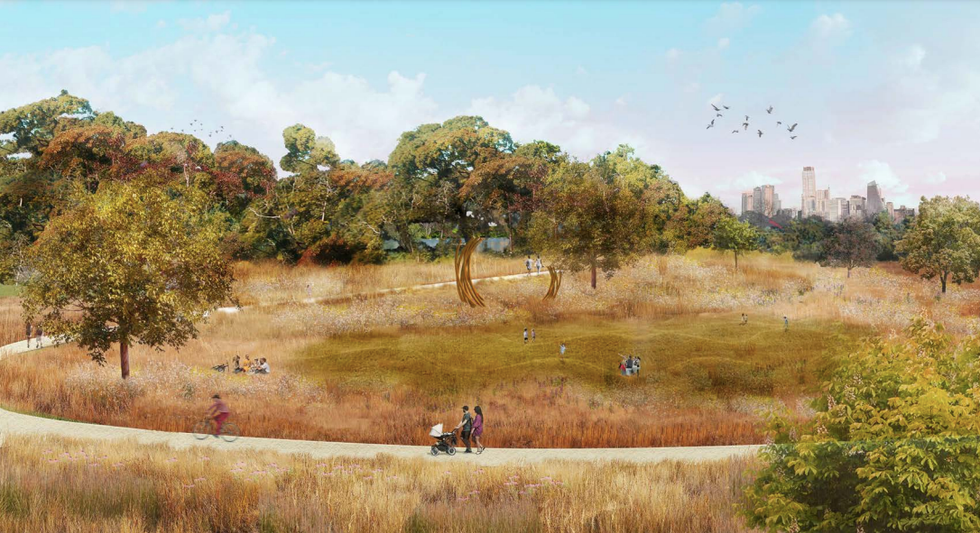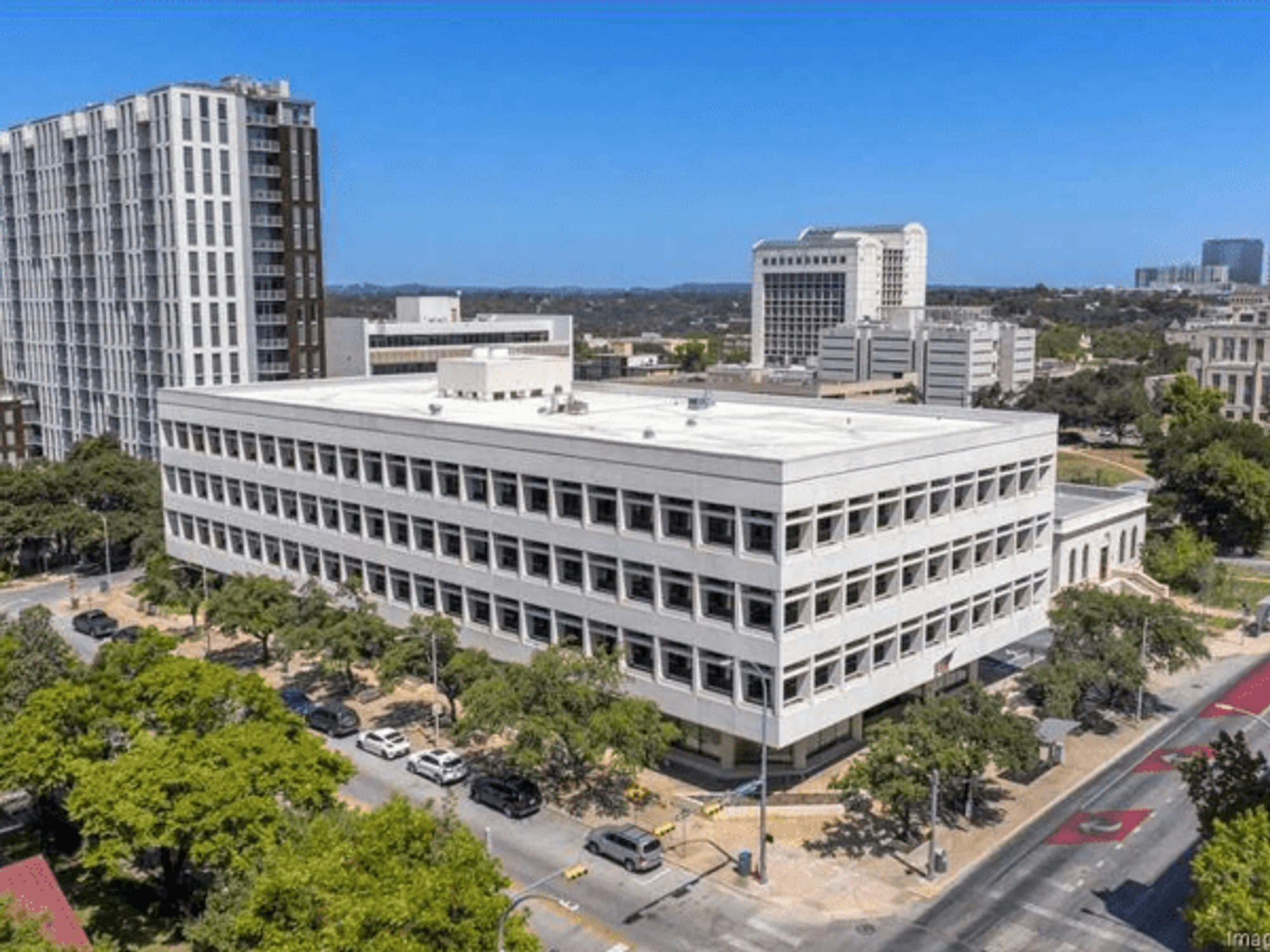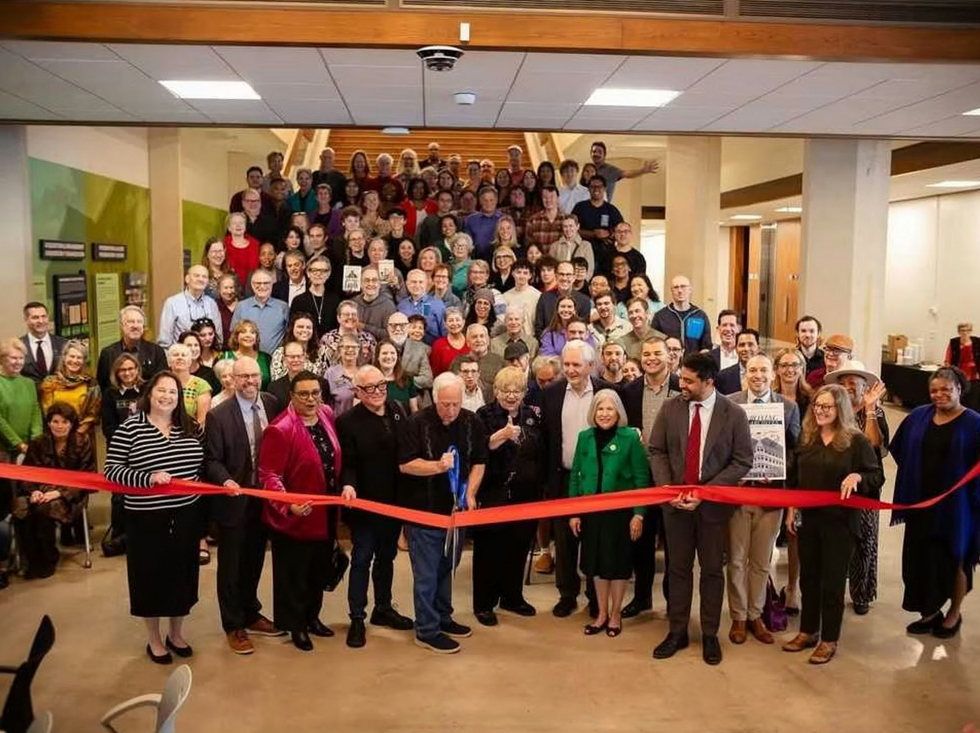Write In
Draft 'Vision Plan' for Zilker Park unveils land bridge and more possibilities

Austinites are invited to comment on a vision plan that could inform the future of Zilker Park.
Austinites are overflowing with opinions about how the city should be evolving, and now they have a chance to apply those thoughts toward the city’s oldest park and most central public space. On November 15, the Austin Parks and Recreation Department released a draft vision plan for the future of Zilker Park, which is open to community comments through January 8, 2023.
Officially titled the “draft Zilker Park Vision Plan document and map,” it sounds broad, because it is. The goal of the plan is to “establish a guiding framework for the restoration and future development of Zilker Metropolitan Park,” which includes all of its 350 acres. It is the first document to tackle this initiative in its entirety, and it emphasizes the need for community feedback.
It is important to note that Zilker Park does not just refer to the Great Lawn, the open space that hosts Austin City Limits Music Festival, which has relatively little structure and programming compared to the surrounding park and facilities. A map on a separate web page shows all the proposed areas in one place.
“One can think of Zilker Park as a complicated puzzle of elements that need to come together to create a holistic park. The decisions made for one element have impacts for the other aspects of the park — from ecological uplift to transportation initiatives to cultural programs and policies,” states a summary in the plan. “It is also important to acknowledge that the plan needs to solve the challenges faced today, but allow for innovative solutions to address climate change, transportation, and generally being a park for a thriving, growing city … the plan needs to think 100 years forward to plan for a sustainable, thriving park."
The 207-page document outlines the history of the park, goals and obstacles concerning ecology and equity, and relevant financial data. Although most of the document is context and sharing past outreach findings, Chapter Six contains the proposed changes, “based fully on the community outreach and stakeholder conversations that have taken place over the course of the planning process.”
Highlights of the vision plan include:
Zilker Land Bridge
Perhaps the most conspicuous change to visitors, if it is implemented, would be the Zilker Land Bridge. Inspired by the land bridge under construction at Houston’s Memorial Park (much larger than Zilker at 1,500 acres), this idea garnered 74 percent approval in the fifth and most recently published survey.
“The land bridge will stitch the park back together by joining the north and south sides of the park with an underground parking garage,” says the summary of the feature. An illustration shows it wrapping over Barton Springs Road, connecting the Great Lawn to proposed areas south of the road including a new Zilker Hillside Theater, a sports area, and a welcome plaza along Barton Creek. Another proposed change would reduce the road to one lane in each direction.

"Ecological Uplift"
The phrase “ecological uplift” appears often in the document (20 times), referring to the possibility of one day reducing parking areas, improving spacing of access points to Barton Creek, and turning landfill areas from contamination hazards to biodiverse park space.
Visitors will recognize one of these landfill areas as the dusty overflow parking behind the Zilker Botanical Garden. Participants in the surveys that informed this document expressed interest in removing waste or adding soil, and the plan illustrated a wooded and meadow area to replace these. As readers can imagine, ecological uplift is a primary concern with too many proposed solutions to summarize, but the document specifies 91 acres to undergo some type of uplifting treatment.

Parking garage
Any Austinite that has driven to and from Zilker Park has likely spent hours slumped behind the steering wheel waiting for other drivers to clear out, or circling the free parking lots. The change most Austinites have responded to in the first 24 hours of comments is a proposed parking garage. It would be located “on the east side or under MoPac” and service “Zilker Botanical Garden, Austin Nature and Science Center, the new Rowing Dock, and the Ann and Roy Butler Trail.”
Several commenters call for better efforts at encouraging public transportation. (The document contains the word “bus” 20 times and proposes city-monitored “triggers” that would allow for parking areas to be reclaimed as park space, one being the achievement of 15-minute-or-less bus arrivals.)

A concern it is difficult for the plan to address is local discomfort with change and overdeveloping a piece of land that feels, to many, like one of the only parts of the city that isn’t subject to the urbanization of the surrounding city.
“I don't know if we need a sports field and playscapes on the south side,” wrote one commenter, who on November 16, held the top comment. “I think they will fall into disrepair quickly and one of the cool things about Zilker is that it's open and natural. It doesn't need to be built up for people to enjoy it. [It]'s just natural and open."
Community members are encouraged to share feedback by commenting on the draft plan and the map, taking the surveys on both pages, and meeting the planning team around town. There are community meetings on December 7 (virtual) and 10 (McBeth Recreation Center), plus six pop-ups between November 17 and December 17.
More information about the Zilker Vision Plan, including overviews, important documents, and community schedules, is available at austintexas.gov. Only a small portion of the information available through the plan is reflected in this article.

 Mayor Kirk Watson, library officials, and community members cut the ribbon on the "new" Austin History Center on December 7.Photo courtesy of the Austin History Center Association
Mayor Kirk Watson, library officials, and community members cut the ribbon on the "new" Austin History Center on December 7.Photo courtesy of the Austin History Center Association